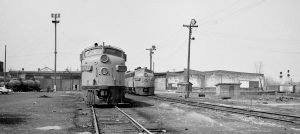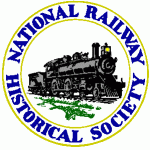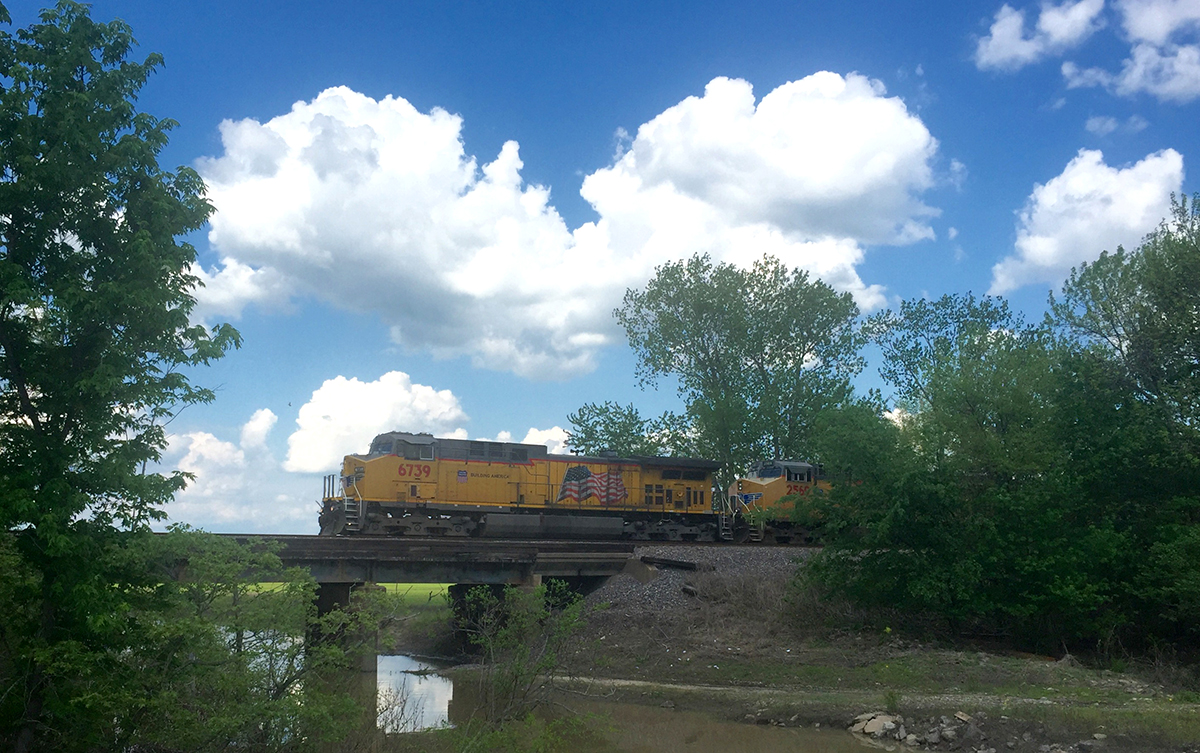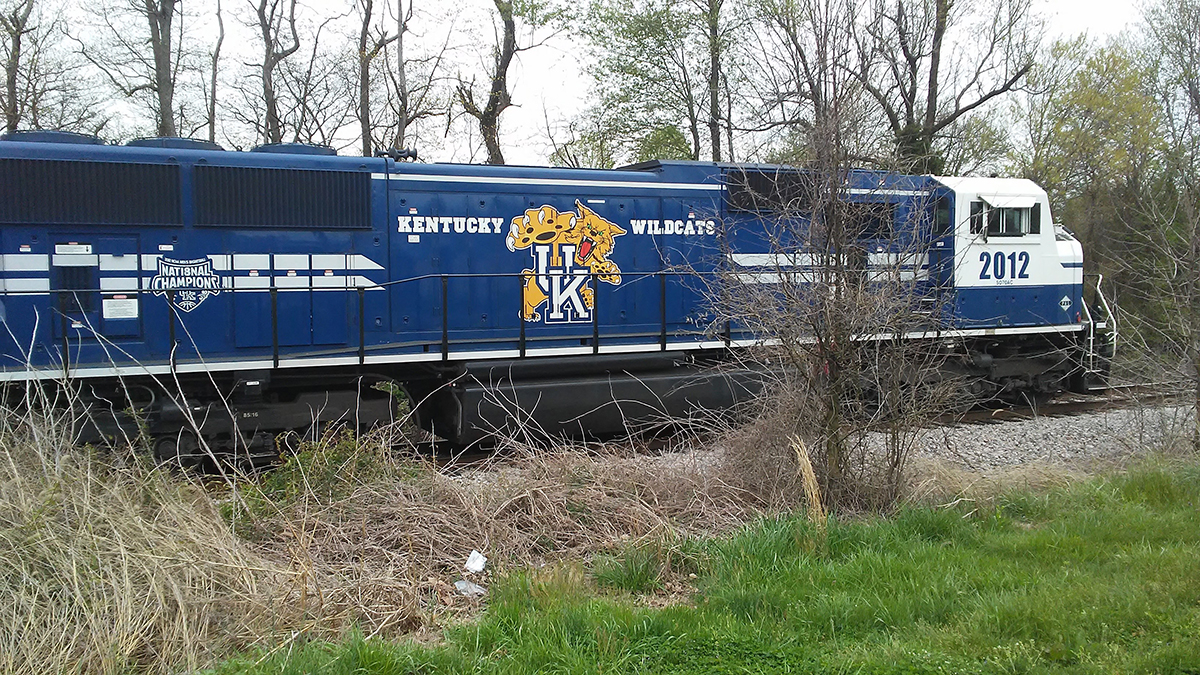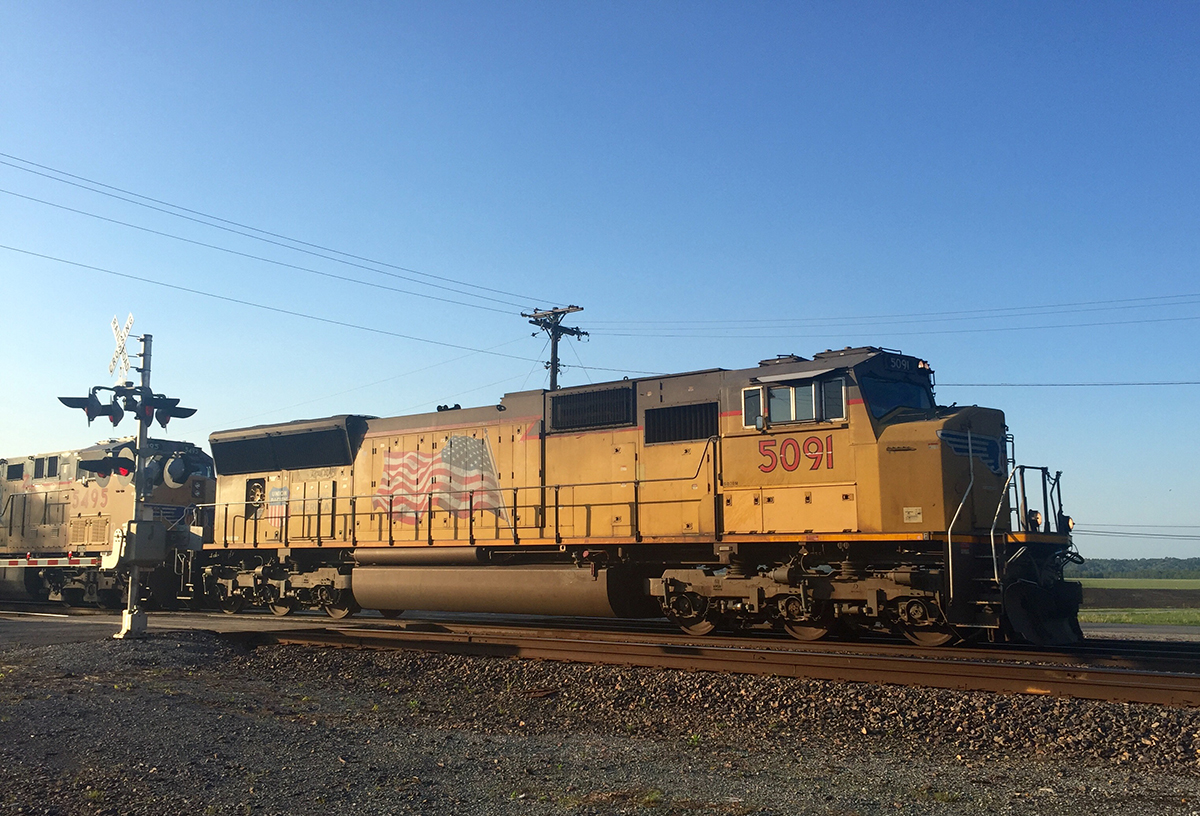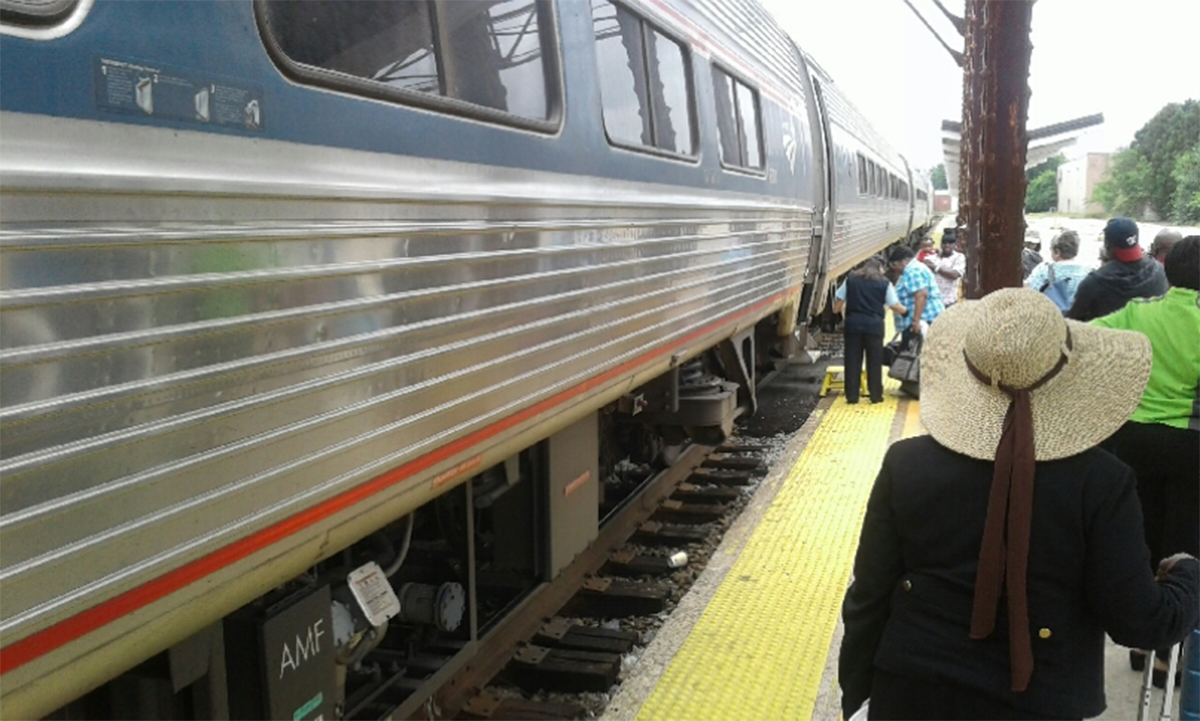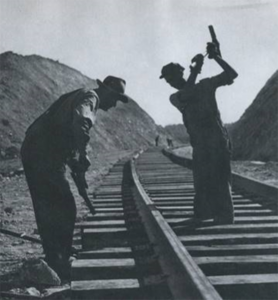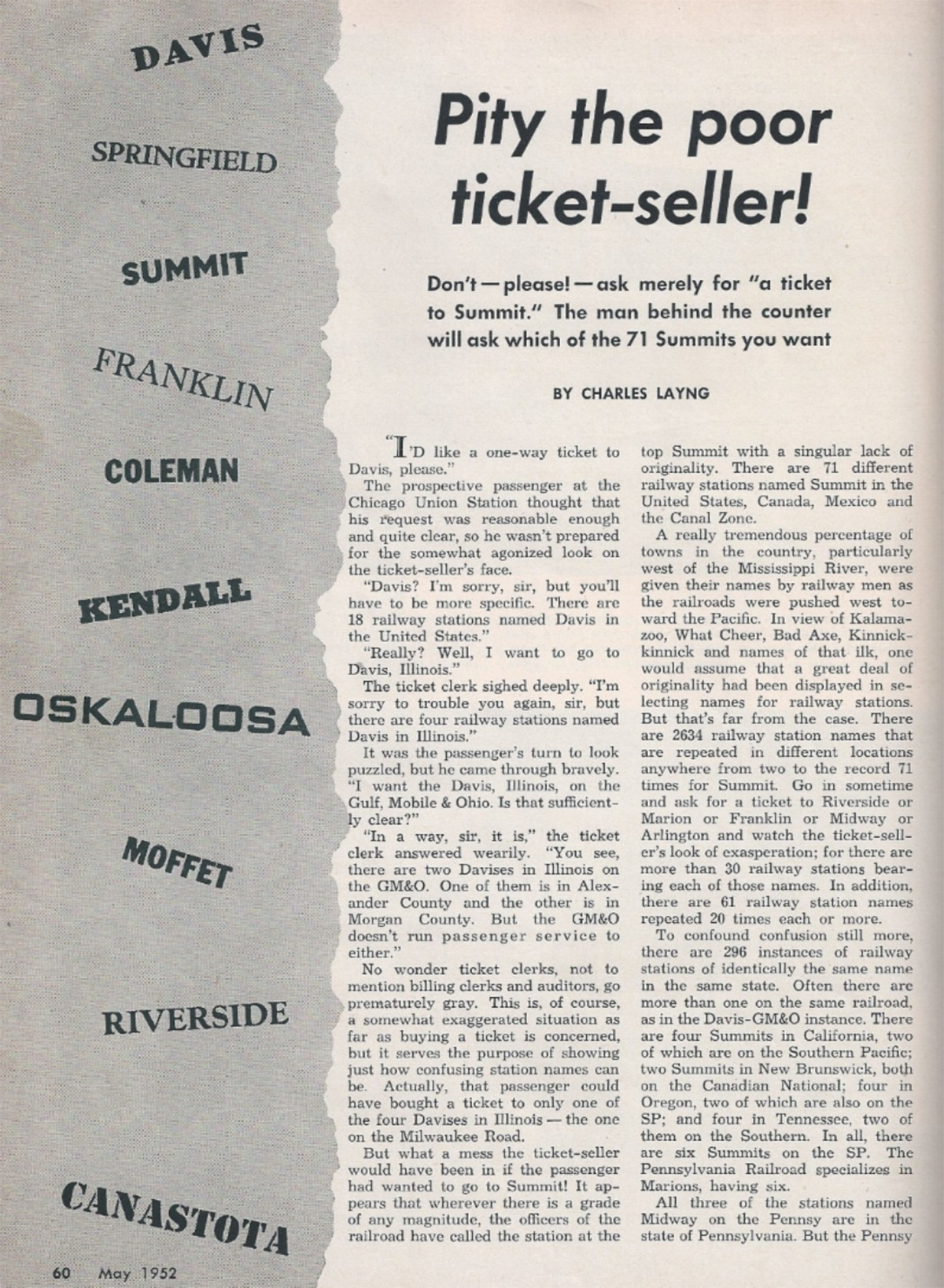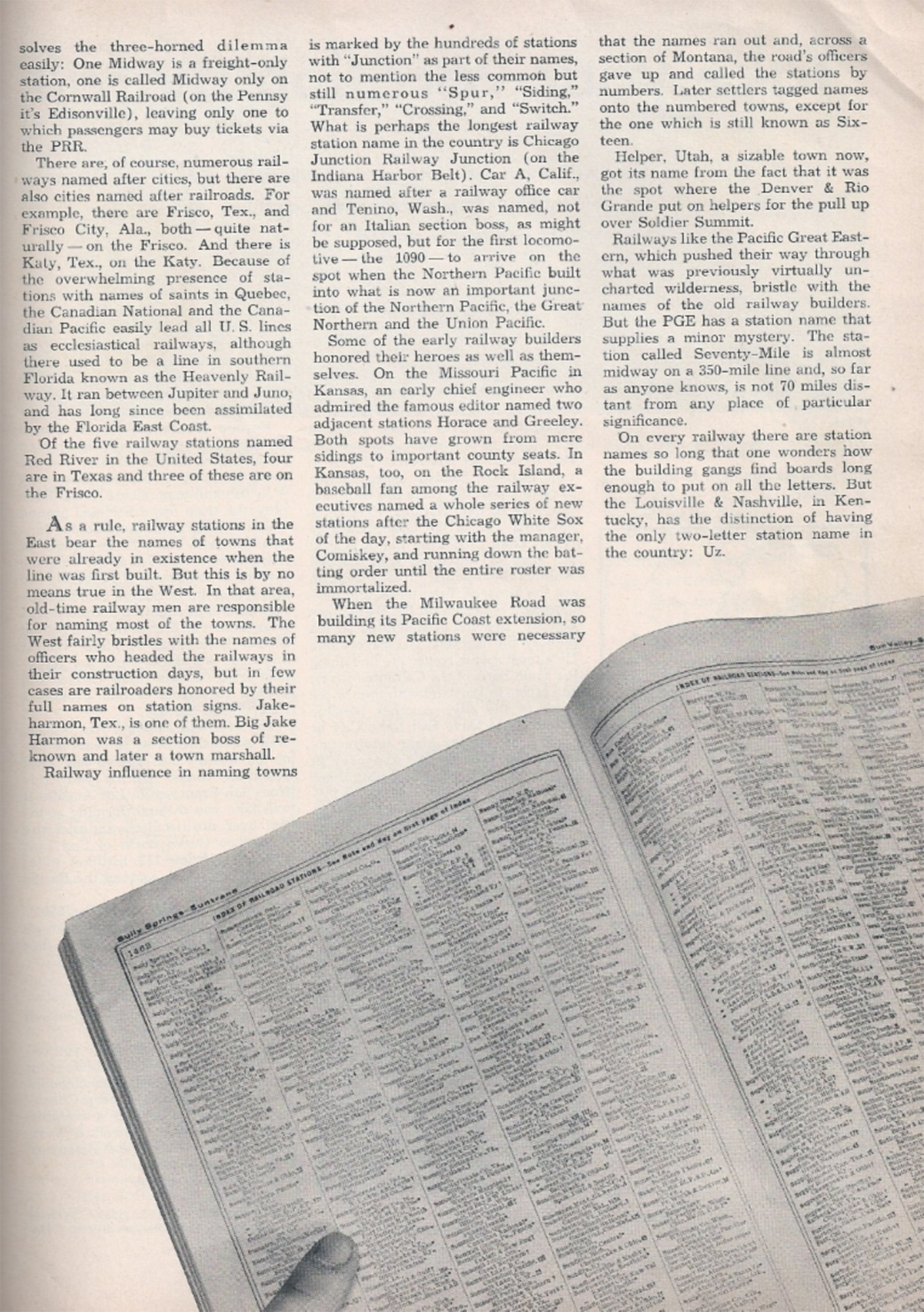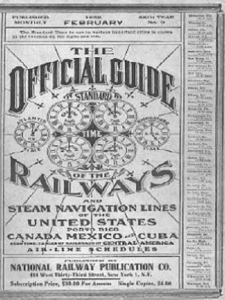 “The Official Guide was the primary reference used by ticket agents for all railroads in the U.S. and Canada, and for international rail travel to Mexico. The Guide was especially useful for constructing connections among the many railroads of the time. The Official Guide, published monthly, also included some high priority freight schedules, system maps, listing of company officers, an index of all railroad stations, industry news briefs and personnel changes, rosters of key railroad officials, and new passenger train announcements, along with steamship schedules. Ticket-sellers like the one in the story below relied on the Guide, a large book a couple inches thick. You’ll soon see why.”
“The Official Guide was the primary reference used by ticket agents for all railroads in the U.S. and Canada, and for international rail travel to Mexico. The Guide was especially useful for constructing connections among the many railroads of the time. The Official Guide, published monthly, also included some high priority freight schedules, system maps, listing of company officers, an index of all railroad stations, industry news briefs and personnel changes, rosters of key railroad officials, and new passenger train announcements, along with steamship schedules. Ticket-sellers like the one in the story below relied on the Guide, a large book a couple inches thick. You’ll soon see why.”
“I’d like a one-way ticket to Davis, please.” The prospective passenger at the Chicago Union Station thought that his request was reasonable enough and quite clear, so he wasn’t prepared for the somewhat agonized look on the ticket-sellers face. “Davis? I’m sorry, sir, but you’ll have to be more specific. There are 18 railway stations names Davis in the United States.” “Really? Well, I want to go to Davis, Illinois.” The ticket clerk sighed deeply. “I’m sorry to trouble you again, sir, but there are four railway stations names Davis in Illinois.”
It was the passenger’s turn to look puzzled, but he came through bravely. “I want the Davis, Illinois, on the Gulf, Mobile & Ohio. Is that sufficiently clear?”
“In a way, sir, it is,” the ticket clerk answered wearily. “You see, there are two Davises in Illinois on the GM&O. One of them is in Alexander County and the other is in Morgan County.”
This is of course, a somewhat exaggerated situation, but what if the passenger had wanted to go to Summit! Wherever there was a grade of any magnitude, the officers of the railroad called the station at the top: Summit. There were 71 different railway stations names Summit in the U.S., Canada, Mexico and the Canal Zone. The photo is the complete story by Charles Layng as published in TRAINS Magazine of May 1952, nearing the end of the heyday of rail travel. A good read. (You may need to creatively enlarge the attachment)
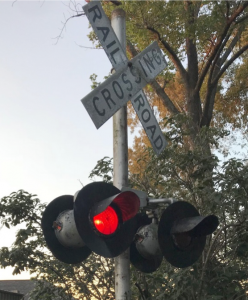 I’m trying a little RR historical preservation in my back yard these days. This signal and lights came from West Broadway (Madisonville KY) a few years ago when CSX replaced it with gates. Hope to have a flasher unit from Paducah RR museum soon.
I’m trying a little RR historical preservation in my back yard these days. This signal and lights came from West Broadway (Madisonville KY) a few years ago when CSX replaced it with gates. Hope to have a flasher unit from Paducah RR museum soon. 







